Safety requirements for hazardous areas are crucial, safeguarding operations, personnel, and assets, and making certification indispensable for industrial operations. In today’s industrial landscape, particularly in harsh sectors like Oil&Gas, Mining, Biogas, Hydrogen, and more, safety and compliance take center stage. Industrial wireless sensors play a pivotal role in ensuring the secure and smooth operation of industrial processes.
To ensure reliability and compliance, sensors must undergo meticulous certification processes, adhering to strict safety requirements for hazardous areas – a focal point addressed by SENSAiO! This comprehensive article delves into key certifications, elucidating their significance and advantages that extend beyond mere compliance. The stringent safety requirements for hazardous areas not only prevent accidents but also establish and maintain the highest standards in challenging industrial environments. In this context, SENSAiO provides a streamlined pathway to certification, facilitating the integration of wireless sensor technologies seamlessly. This strategic alignment ensures not only compliance but also operational excellence and safety resilience, further enhancing the overall effectiveness of industrial processes.

ATEX (Atmosphères Explosibles) certification is essential for industries with explosive atmospheres. Applied mainly in European countries, such as Oil&Gas facilities, chemical plants, refineries, and mining operations, ATEX certification minimizes the risk of explosions, fires, or other incidents. Using ATEX-certified sensors ensures safety and improves efficiency in demanding environments.
Consult European Commission website
IECEx (International Electrotechnical Commission System for Certification to Standards Relating to Equipment for Use in Explosive Atmospheres) is globally recognized, providing a certification scheme for equipment used in explosive atmospheres. It offers a specific process and framework for manufacturers to demonstrate compliance with IEC standards.
Consult IECEx website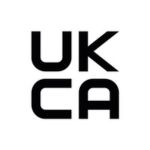
UKCA (UK Conformity Assessed) certification is mandatory for products entering the UK market. It ensures that industrial wireless sensors meet necessary safety, performance, and quality criteria, providing assurance to manufacturers and end-users.
Consult UK government website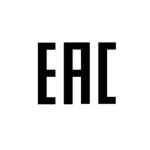
EAC (Eurasian Conformity) is required for industries within the Eurasian Customs Union, including Russia, Belarus, Kazakhstan, Armenia, and Kyrgyzstan. This certification indicates that wireless sensors conform to safety and quality standards, facilitating trade and market access in these countries.
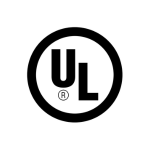
HAZLOC NEC/CEC – MET (MET Laboratories) certifications ensure compliance with safety standards in North America. UL/MET-certified sensors allow companies in the United States and Canada to meet regulatory requirements, protecting personnel and assets.
Consult US Department of Labor website
CSA (Canadian Standards Association) certification is specifically designed for products distributed and used in Canada, ensures that industrial wireless sensors meet Canadian safety standards. This process provides peace of mind to industries by meeting stringent safety requirements, improving operational efficiency, and facilitating market access within Canada.
Consult CSA Group website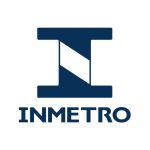
INMETRO (National Institute of Metrology, Quality, and Technology) certification is required for products sold in Brazil. It guarantees compliance with Brazilian safety and performance standards, assuring the reliability of industrial wireless sensors. INMETRO-certified sensors enable companies to enter the Brazilian market, demonstrating their commitment to safety and compliance.
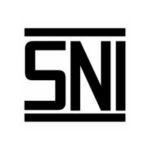
SNI (Standard Nasional Indonesia) certification verifies that industrial wireless sensors comply with Indonesian safety and quality standards, ensuring their suitability for the Indonesian market. By obtaining SNI certification, manufacturers can showcase their compliance with Indonesia’s regulatory framework, which can help them broaden their business opportunities in the country’s industries.
Consult SNI certification website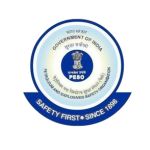
PESO (Petroleum and Explosives Safety Organization) certification is mandatory in India. It ensures compliance with safety standards set by the Petroleum and Explosives Safety Organization. In India, all products that need IECEx or ATEX certification also need PESO registration.
Consult PESO website
KCS (Korea Certification) is required for products sold in South Korea. It validates compliance with safety and quality standards established by the Korea Occupational Safety and Health Agency (KOSHA).
Consult KOSHA website
ECAS (Emirates Conformity Assessment Scheme – UAE) certification is necessary for entering the United Arab Emirates (UAE). It verifies adherence to relevant safety and technical standards.
Consult UAE MOIAT website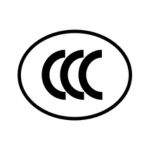
CCC (China Compulsory Certification – China) is compulsory for industrial wireless sensors in China. Regulated by the Certification and Accreditation Administration of China (CNCA), it ensures compliance with national safety and quality standards. Manufacturers aiming to enter the Chinese market must acquire CCC certification.
In harsh industries like energy or manufacturing, ensuring the smooth and secure operation relies on vital safety and compliance certifications for industrial wireless sensors. Moreover, utilizing SENSA.iO offers numerous benefits surpassing mere compliance requirements. These encompass enhanced workplace safety, heightened operational efficiency, broader market access, and increased global competitiveness. Therefore, industries can actively prioritize the safety of personnel and assets in challenging environments by choosing certified wireless sensors. This strategic approach instills confidence in adopting wireless technology.
This information serves as a general reference. For detailed hazardous location definitions and equipment installation requirements, refer to the current edition of the National Electrical Code (NEC), Chapter 5 Articles 500 through 516, available from the National Fire Protection Association. Also, consult the current version of the Canadian Electrical (CE) Code, Part 1 Section 18, available from the Canadian Standards Association, and the 94/9/EC ATEX Directive from the European Commission.
Interested in Methane compliance?
Check out our article